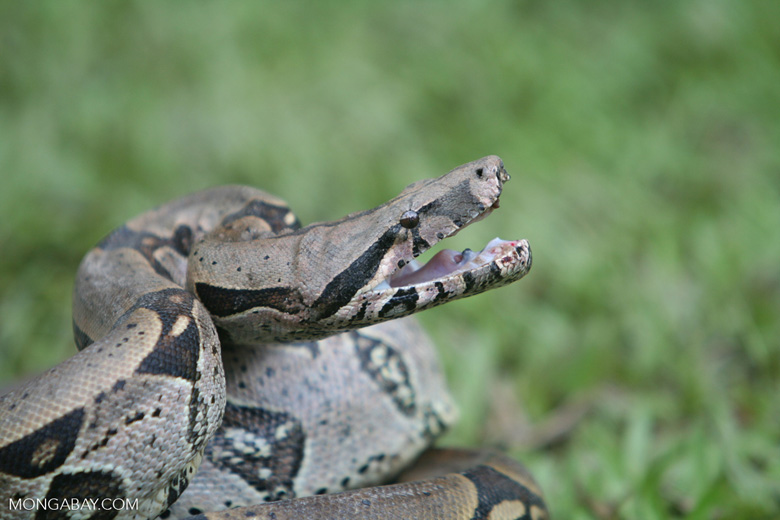- Until now, it was widely believed that boa constrictors killed their prey by squeezing the air out of its victim’s lungs.
- Scientists recently found that when a snake squeezes its prey, it is actually restricting the flow of blood and oxygen to the animal’s vital organs.
- Lead researcher, Dr. Scott Boback, said he felt compelled to conduct this research because, “It’s one of those questions that has sort of always just been left unanswered in the herpetological world.”
Hollywood and Youtube have shown us plenty of images of constrictor snakes killing their prey. But until now, it was widely believed that what we were watching was the snake squeezing the air out of its victim’s lungs.
Scientists recently disproved this myth, instead showing that when a snake squeezes its prey, it is actually restricting the flow of blood and oxygen to the animal’s vital organs.
The study team, led by Dr. Scott Boback, an Associate Professor of Biology at Dickinson College, in Carlisle, Pennsylvania, recently published its discovery in The Journal of Experimental Biology.
Boback described the findings to mongabay.com as both “revealing” and “astonishing”.

“Our results suggest that boas are subduing and killing their prey during constriction by significantly affecting the prey’s cardiovascular system,” reported the researchers. Constriction quickly leads to changes in blood chemistry, with elevated blood potassium and acidosis. “Organs such as the liver, brain and heart would be the first to succumb to rapid tissue hypoxia,” the deficiency of oxygen reaching body tissues. There was also “direct evidence that the cardiac muscle is indeed affected by such ischemia,” the decrease in blood supply — surprisingly occurring within the first 30 seconds of constriction.
“As soon as the snake was applying pressure, the blood pressure just immediately started going down, and going down really rapidly; and as fast as that blood [pressure] was going down, there was a nearly immediate change in the cardiac electrical activity,” said Boback. “This stuff happened so fast.”
Dr. Boback told Mongabay that the research team’s objective was “to measure internal physiological parameters of the prey in order to try to figure out what are the consequences of having a snake wrapped around you.”
Boback felt compelled to conduct this research because, “It’s one of those questions that has sort of always just been left unanswered in the herpetological world: how do snakes kill their prey?”

For almost a year, the researchers examined the cardiovascular functions of 24 anesthetized rats before, during and after being squeezed by boa constrictors. The scientists monitored the rats’ baseline flow of blood, then allowed the snake to bite and constrict to determine the impact of constriction on the prey’s circulatory system.
This experiment wasn’t as simple to carry out as it might sound. Dr. Boback said that his team faced many challenges along the way and “overcame a lot of odds”.
“In order to monitor the pressure in the arteries and veins, you have to put what is called a vascular catheter inside an artery and the vein, and it’s like trying to put a human hair inside another human hair,” he explained. “And of course this is a living animal that is under anesthesia and so you only have so much time. I had actually never done this before and so there was a lot of pressure.”
Boback believes the data he and his team collected can help scientists better understand how these snakes evolved. “Even though we were really just looking at an empirical question, about how do snakes kill their prey, what we are really figuring out is how snakes in general may have evolved the ability to safely subdue and kill their prey, which of course also has implications for predators in general.”
Citation:
Boback, S.M., McCann, K.J., Wood, K.A., McNeal, P.M., Blankenship, E.L., Zwemmer, C.F. (2015). Snake constriction rapidly induces circulatory arrest in rats. The Journal of Experimental Biology 218, 2279-2288.













